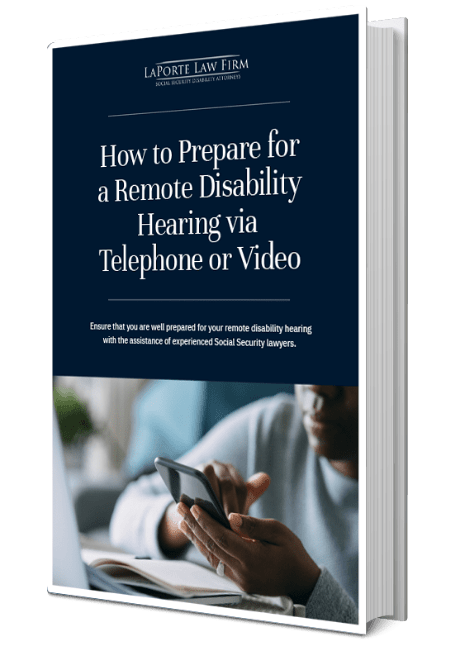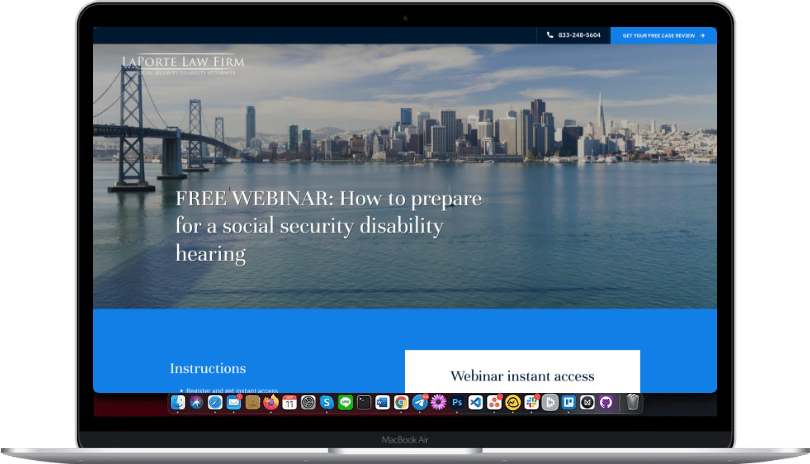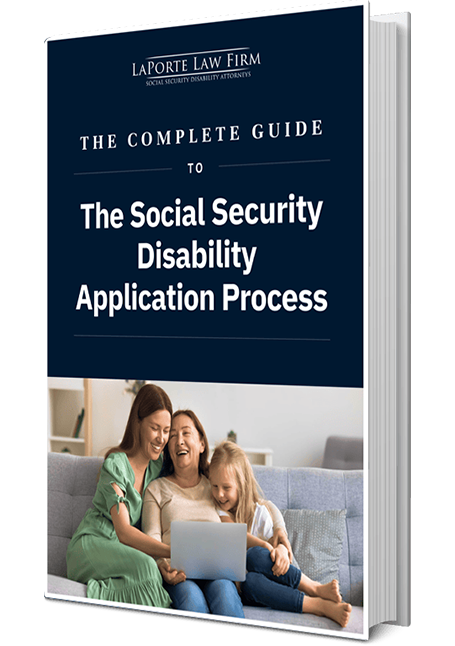
If you’re currently receiving Social Security Disability Insurance (SSDI) benefits, or you’re thinking of applying for SSDI, you may have asked yourself one crucial question: How long does SSDI last? In this blog post, we shed light on the factors influencing the duration of SSDI and scenarios that may affect your benefits.
What is SSDI, and How Does the SSDI Benefit Process Work?
Social Security Disability Insurance is a federal insurance program administered by the Social Security Administration (SSA). It provides monthly benefits to people who are unable to work due to a severe, long-lasting impairment.
SSDI is financed by your Social Security paycheck deductions. To be eligible for SSDI benefits, you must have earned FICA-taxed wages. To be insured under the program, you must have worked a total of 10 years (amounting to 40 quarters), 5 of which must be within the last 10 years (20 of the last 40 quarters). To determine your insured status, you can create an account on the SSA website. You can use your account to review your FICA-taxes wages and find out your potential monthly disability benefit payment.
To qualify for SSDI, you must show the SSA that you are disabled from full-time work and your disability has lasted or can be expected to last for 12 consecutive month.
- Are you working? In general, you cannot be working and qualify for SSDI. If you are currently working, the SSA will issue an initial step 1 denial. If you are not working, they will proceed to step 2.
- Is your condition severe? Your condition is severe if it impacts your ability to perform basic work-related activities for at least 12 consecutive months.
- Does your condition meet the requirements of a listed impairment?
The SSA has a listing of certain disabilities, which include mental disabilities (e.g., depression), neurological disorders (e.g., epilepsy), or respiratory disorders (e.g., asthma or cystic fibrosis). You can find all the listings of disabilities here.
A listing-level impairment is viewed by the SSA as a high burden of proof. If they conclude that you meet one of the medical listings, your case will be approved automatically. If not, the case will proceed to step 4.
- Can you return to your past work? The SSA will review all of the past work you’ve performed in the past 15 years. After determining what you can still do despite your disability, the SSA will determine if you can return to your past work. If you can still do your past work, your disability claim is denied at step 4. If not, the claim will proceed to step 5.
- Can you perform any other type of work in the national economy? At step 5 of the sequential evaluation, the burden of proof shifts to the SSA to prove that there is other work in the national economy that a disabled person can perform.
After an application for SSDI is filed, the SSA will proceed through the five-step sequential evaluation discussed above. The application requires detailed information about your past work and your medical condition and how it impacts your ability to work. If the SSA determines during the application stage or on appeal that your severe impairment prevents you from performing your past work or performing other work in the national economy, they will award benefits.
If the SSA approves your claim for disability benefits, it means they have concluded that you have a disability that prevents you from performing your past work and other work in the national economy. Your disability benefits will continue unless there is a change in your circumstances, which we will explain in this article.
When Does SSDI End?
There are several reasons why the Social Security Administration may end your SSDI benefits. These include the following:
You reach full retirement age
The SSA will pay SSDI monthly benefits until you reach full retirement age. If you were born in 1957 or earlier, you have already reached full retirement age. The full retirement age increased gradually if you were born from 1955 to 1960. For anyone born in 1960 or later, full retirement benefits are payable at age 67.
As long as you remain disabled, the SSA will continue to pay your SSDI benefits until you reach full retirement age. Once you reach full retirement age, your SSDI benefits will stop and you will automatically receive your retirement benefit.
Your medical condition improves
If you are receiving SSDI benefits, the SSA will periodically conduct a review of your case to determine if you are still disabled. This involves a process called a Continuing Disability Review (CDR), which may occur as frequently as every year or as infrequently as every five to seven years. During this process, the SSA will request and review your updated medical records from the date of the most recent favorable decision to determine if you continue to have a disabling condition or if your condition has improved to the point that you can work.
If the SSA determines that your condition has improved since the most recent favorable determination, your benefits may stop. If you disagree with the cessation decision and believe that you are still disabled, you may file an appeal. We recommend that you consult an experienced attorney to assess your case if your benefits end after a CDR.
You return to work
If you receive SSDI benefits, you are permitted a trial work period. The trial work period allows you to test your ability to work for nine months while you receive your SSDI benefits. You will continue to receive your full SSDI benefit payments during this time, no matter how much you earn. The trial work period continues until you work nine months within a 60-month period. The months counted toward your trial work period do not need to be consecutive.
The SSA determines whether the work you perform constitutes a trial work period month based on the amount you earned in that month. In 2024, earnings of $1,100 or more count as a trial work period month. After you complete your trial work period, your SSDI benefits will end if you continue to work at substantial gainful activity (SGA) levels. The SGA is the earnings threshold used by the Social Security Administration to determine eligibility for disability benefits. In 2024, that amount is set at $1,550. If you have used up the nine months of your trial work period and continue to work and earn more than $1,550 a month, your SSDI monthly benefits will end.
You pass away
SSDI benefits end upon the death of the beneficiary. After the SSDI beneficiary’s death, certain family members may be eligible for monthly survivor benefits, including:
- Surviving spouse age 60 or older (age 50 or older if they have a disability)
- Surviving divorced spouse, under certain circumstances
- Surviving spouse at any age who is caring for the deceased’s child who is under age 16 or has a disability and receiving child’s benefits
- Unmarried child of the deceased who is one of the following:
- Younger than age 18 (or up to age 19 if they are a full-time student in an elementary or secondary school)
- Age 18 or older with a disability that began before age 22
If you’d like to learn more about survivor’s benefits, you can read our blog article here.
You are imprisoned
SSDI benefits are not payable for months during which you are in prison for a criminal offense. Your benefits will be suspended if you are convicted and sentenced to jail or prison for more than 30 continuous days. The SSA will reinstate your benefits starting one month following your release.
A certain period of time is reached
In some cases, SSDI benefits are granted for a specific period of time. This is called a period of disability. When benefits are awarded, the SSA issues a Notice of Award, where the SSA explains the date they determined you became disabled and the date your eligibility for SSDI benefits begins. In a case where you are only awarded a period of disability, the SSA will also explain the date your disability benefits will end. To learn more about the Notice of Award, you can read our article on the Social Security award letter.
If you believe your disability has continued and you are unable to work, you can file an appeal. You will receive your SSDI benefits for the period that SSA awarded them while you pursue your appeal seeking any future benefits.
What Other Options Are Available When SSDI Ends?
There are various options you can pursue if and when your SSDI benefits end. Some of these are:
Filing an appeal
If the SSA has prematurely ended your disability benefits and you disagree with their decision, you may file an appeal. The appeal must be filed within 60 days of the notice of termination of SSDI benefits. On appeal, you must explain why you are still disabled. If you are considering an appeal, you should contact an experienced attorney to help you navigate the process and ensure a successful outcome.
Applying for regular Social Security retirement benefits
If you are on SSDI benefits and you reach full retirement age, your SSDI benefits automatically convert to retirement benefits — no application is necessary. But if your SSDI benefits end before you reach full retirement age, you can consider an application for early retirement benefits. You can start receiving your Social Security retirement benefit as early as age 62. In the case of early retirement, you can find out how much your benefit will be reduced by using the SSA’s early retirement chart.
Seeking employment opportunities
In some cases, an SSDI recipient may be able to improve to the point where they can return to work, either on a full-time or part-time basis. The SSA administers a Ticket to Work Program, which is designed to support career development for people who receive SSDI and want to work. It offers free employment services to help you determine how to prepare for work, find a job, and successfully maintain employment. You can receive services such as career counseling, vocational rehabilitation, and job training. The SSA will not initiate a continuing disability review if you are enrolled in the Ticket to Work Program. To learn more about the program, you can visit SSA’s website here.
Checking eligibility for Medicaid or Medicare
If you no longer receive SSDI benefits because the SSA determined your condition improved, you lose both your SSDI and your Medicare benefits. However, if you no longer qualify for SSDI because you completed your trial work period and continued to work, you may still be able to keep your Medicare benefits. You may continue to be eligible for Medicare for at least 8.5 years.
If you are not eligible for Medicare benefits, you may be eligible for Medi-Cal (California’s Medicaid Program). To meet Medi-Cal’s eligibility requirements, you must live in California and meet certain income and household eligibility requirements. For more information, click here.















